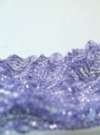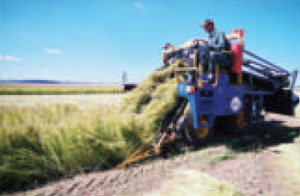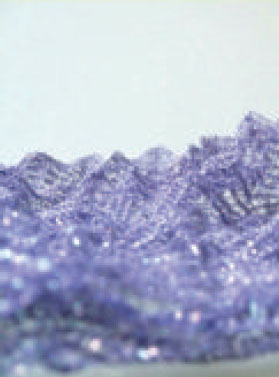
Expanded Turkish offer at Texworld Paris
CELC Masters of Linen has announced details of its ‘Be Linen’ campaign, an EU and French funded initiative to support the promotion of linen, a fibre which originates on the European continent and represents two thirds of the world’s production. The three year programme is co-funded by the EU, France Agriculture & Fishing Ministry and the CELC Masters of Linen organisation and aims to create and produce informative and promotional activities in support of

1st December 2010
Knitting Industry
|
Paris
 CELC Masters of Linen has announced details of its ‘Be Linen’ campaign, an EU and French funded initiative to support the promotion of linen, a fibre which originates on the European continent and represents two thirds of the world’s production.
CELC Masters of Linen has announced details of its ‘Be Linen’ campaign, an EU and French funded initiative to support the promotion of linen, a fibre which originates on the European continent and represents two thirds of the world’s production.
The three year programme is co-funded by the EU, France Agriculture & Fishing Ministry and the CELC Masters of Linen organisation and aims to create and produce informative and promotional activities in support of linen fabrics for Fashion, Home and Interiors. Targeting the three key linen markets of France, Italy and Belgium, the programme commenced in September 2010 and will finish in August 2013. The programme has a total budget of Euro 3,320,690.
Key elements of the campaign will include: web 2.0 strategy, industry information kits, press campaign, special events at fashion and interior trade shows, a new focus of trends & directions, consumer events in Paris & Milan linked to key exhibitions, information tours of the industries in France, Belgium and Italy, a student training programme and a film of the linen ‘voyage’ from plant to fabric.
Presenting the EU funding was left to right: Frédéric Douchy President European Confederation of Linen and Hemp (CELC), Michele Ottati Unit Manager AGRI D.4 – Promotion of E.U. agricultural products, Marie Emmanuelle Belzung Director CELC, Olivier Louveau, Project Director – France Food Agriculture and Fishing Ministry.
“Eco-responsibility, proximity, innovation: linen’s key words resonate perfectly with the expectations of our contemporary society. However, this harmony is not new. It constitutes the DNA of the entire European linen industry and the Be Linen programme – a ‘megaphone’ for our activities – will allow us to strengthen this perception,” said Frédéric Douchy President – European Confederation of Linen and Hemp
“The Be Linen program symbolizes the ambition we bring to life in the new Communal Agriculture Policy : to help market our products with a ‘Made in Europe’ added value. The industry’s range of finished products affects us daily, from clothes to art of living. In this context, its promotion becomes a vital pillar, an instrument that will better position agricultural products in the market,” added Michele Ottati.
 The plant
The plant
The flax plant from which linen originates, is made from a single stem, approximately one metre high which has about 80 to 100 leaves. The flower, most often blue, has a centre consisting of five lobes each of which contains two seeds. Growth is rapid; the plant matures in 100 days. Flax is cultivated like a textile plant for the fibres in the stem and for its seeds which produce quality oil.
Scutching
The flax fibres are in the stem. To use them, they must be extracted from the bark around them and the wood inside the stem also must be removed. Scutching is carried out after collecting the plants, most often in August and December.
The next steps are shelling, stretching, braking and threshing. Combing, the first spinning operation, is today often done by scutchers. The combed fibres look like soft, lustrous ribbons.
Retting
When it has matured, the flax is pulled out of the ground and laid in the field in bunches where the alternating rain and sunshine allows it to ret. The combined action of sun and rain detaches the plant’s fibrous part by eliminating the pectose which holds the fibres to the woody part. Retting is an important operation that plays a key role in the quality of the linen fibre.
Spinning
Flax spinning includes different operations which transform the fibres into yarn. Untangling, regularizing, stretching and spinning fibres are all complex steps whose techniques vary depending on the raw material used and the type of yarn to be produced. There are two traditional techniques for pure flax fibres: wet spinning uses the long fibres and produces thin yarns (for clothing and household linens); dry spinning uses the shorter fibres and produces thick yarns (for home decoration and technical uses).
Yarn properties like fineness, tenacity and regularity are constantly improved and novelty (twisted, blended etc.), ecru or bleached yarns are created using the latest embellishment techniques.
 Knitting
Knitting
For the past few years, European linen has been introduced to the knitted fabric industry. Pure linen or chief-value linen blends continue multiplying in a variety of styles which can be casual or city-chic. Knits play a major role in contemporary fashion for both men and women and linen has found a niche thanks to the efforts of linen spinners who produce smooth, fine yarns to meet the industry’s technical requirements.
Circular and flat linen knits result in high-end jerseys recognizable by their hand and shine. Their drapiness and fluidity bear witness to the fact that they do not wrinkle. Full-fashioning techniques validate linen through refined, finished details while the trend toward handknits helps us rediscover the charm of craftsmanship.
Weaving
Thanks to its unique proportions, linen yarns lets us produce a broad range of fabrics with multiple uses which have a high quality and an acknowledged aesthetic value. These fabrics are made under favorable technical and economic conditions using modern equipment.
Embellishing
Embellishing groups together with treatments which modify the look of linen yarns or fabrics and give them added value sought by consumers in terms of comfort, aesthetic, function or performance. Four categories can be distinguished : bleaching, dyeing, printing and finishing.
Further reading:

Business intelligence for the fibre, textiles and apparel industries: technologies, innovations, markets, investments, trade policy, sourcing, strategy...
Find out more